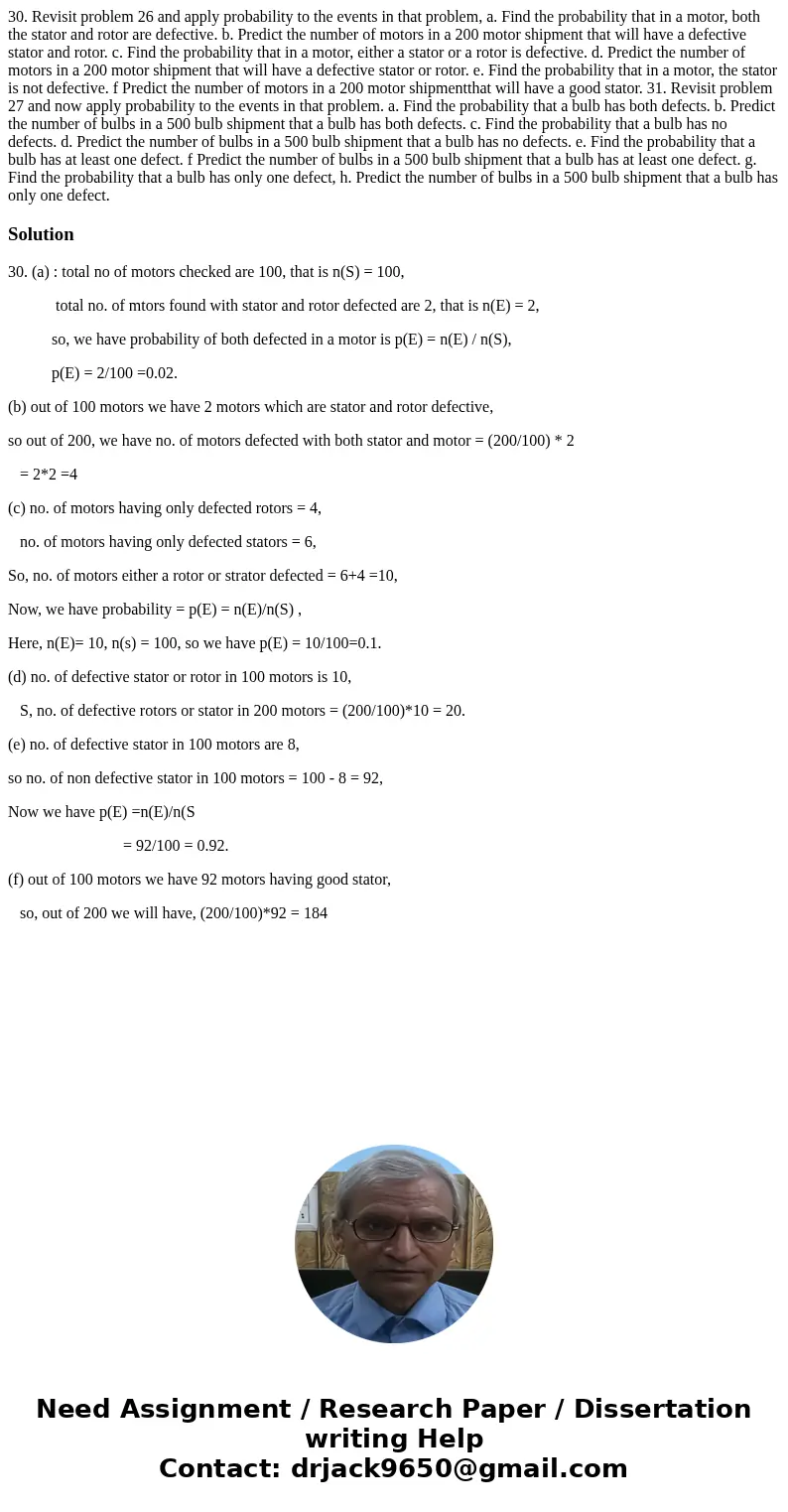30. Revisit problem 26 and apply probability to the events in that problem, a. Find the probability that in a motor, both the stator and rotor are defective. b. Predict the number of motors in a 200 motor shipment that will have a defective stator and rotor. c. Find the probability that in a motor, either a stator or a rotor is defective. d. Predict the number of motors in a 200 motor shipment that will have a defective stator or rotor. e. Find the probability that in a motor, the stator is not defective. f Predict the number of motors in a 200 motor shipmentthat will have a good stator. 31. Revisit problem 27 and now apply probability to the events in that problem. a. Find the probability that a bulb has both defects. b. Predict the number of bulbs in a 500 bulb shipment that a bulb has both defects. c. Find the probability that a bulb has no defects. d. Predict the number of bulbs in a 500 bulb shipment that a bulb has no defects. e. Find the probability that a bulb has at least one defect. f Predict the number of bulbs in a 500 bulb shipment that a bulb has at least one defect. g. Find the probability that a bulb has only one defect, h. Predict the number of bulbs in a 500 bulb shipment that a bulb has only one defect.
30. (a) : total no of motors checked are 100, that is n(S) = 100,
total no. of mtors found with stator and rotor defected are 2, that is n(E) = 2,
so, we have probability of both defected in a motor is p(E) = n(E) / n(S),
p(E) = 2/100 =0.02.
(b) out of 100 motors we have 2 motors which are stator and rotor defective,
so out of 200, we have no. of motors defected with both stator and motor = (200/100) * 2
= 2*2 =4
(c) no. of motors having only defected rotors = 4,
no. of motors having only defected stators = 6,
So, no. of motors either a rotor or strator defected = 6+4 =10,
Now, we have probability = p(E) = n(E)/n(S) ,
Here, n(E)= 10, n(s) = 100, so we have p(E) = 10/100=0.1.
(d) no. of defective stator or rotor in 100 motors is 10,
S, no. of defective rotors or stator in 200 motors = (200/100)*10 = 20.
(e) no. of defective stator in 100 motors are 8,
so no. of non defective stator in 100 motors = 100 - 8 = 92,
Now we have p(E) =n(E)/n(S
= 92/100 = 0.92.
(f) out of 100 motors we have 92 motors having good stator,
so, out of 200 we will have, (200/100)*92 = 184

 Homework Sourse
Homework Sourse